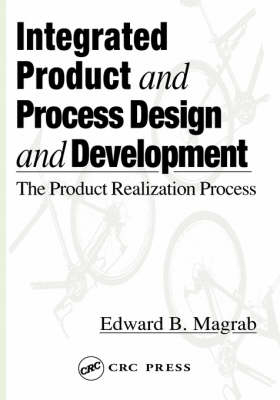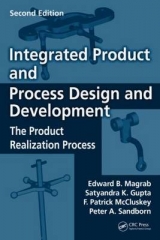
Integrated Product and Process Design and Development
Crc Press Inc (Verlag)
978-0-8493-8483-7 (ISBN)
- Titel erscheint in neuer Auflage
- Artikel merken
The Integrated Product and Process Design and Development (IP2D2) method is quickly becoming the new standard for the rapid creation of competitively priced, high-quality products. IP2D2 indicates, in the broadest sense, the overlapping, interacting, and iterative nature of all of the aspects of the product realization process. The method is a continuous process whereby a product's cost, performance and features, value, and time-to-market lead to a company's increased profitability and market share. This new text/reference reflects the sweeping changes this approach has brought to traditional engineering design courses and to industry.
Carefully organized, with sections on each major stage of the approach, Integrated Product and Process Design and Development: The Product Realization Process is the first complete treatment of this new direction in engineering. The book is designed to help you cultivate an attitude toward design that encourages creativity and innovation, while considering the equally important considerations of customer requirements and satisfaction, quality, reliability, manufacturing methods and material selection, assembly, cost, the environment, and scheduling. Extensively class tested in senior- and graduate-level engineering design courses at the University of Maryland, the book gives equal time to conceptual and practical aspects. As each concept is introduced and explained, two book-long examples provide you with a realistic sense of how a product's creation progresses through its various stages. Numerous checklists and other practical guidelines help you learn to apply the IP2D2 method to your own work.
Students and newly graduated engineers will appreciate the modern perspective that more nearly reflects what they will encounter in practice than what is obtainable in traditional texts. For more experienced practicing engineers, this is the new information they need to keep up with recent rapid changes and stay marketable today and in the future.
Product Development into the 21st Century
Some Definitions
Manufacturing in the 21st Century
Time as a Competitive Advantage
Benchmarking
Partnering with Suppliers
Mass Customization - The Next Paradigm?
Quality
Foundations of Manufacturing
The Integrated Product and Process Design and Development Team Method
Introduction
The lP2D2 Team and Its Agenda
Dynamic and Static Product Status
Company Strategy and lP2D2
Technology's Role in lP2D2
lP2D2 Team Interactions
Product Cost Analysis
Introduction
Factors that Determine a Product's Cost
Cost Models
Product Functional Requirements and Decomposition
Principles of Design
Examples of the Use of the Axiomatic Method
Translating Customer Requirements into Products
Voice of the Customer
Quality Function Deployment (QFD)
Product Design Specification
Product Concepts and Embodiments
Introduction
Concept Generation
Product Configuration (Architecture)
Concept Evaluation and Selection
Product Embodiments
Design for Assembly and Disassembly
Introduction
Design for Assembly
Design for Disassembly (Dismantling) - DFD
Material Selection
Introduction
Ferrous Alloys
Nonferrous Alloys
Special Purpose Alloys
Plastics
Ceramics
Composites
Manufacturing Processes and Design
Introduction
Casting - Permanent Mold
Casting - Permanent Pattern
Casting - Expendable Pattern
Cutting - Mechanical Machining
Cutting - Electromachining
Forming - Sheet
Forming - Bulk
Powder Processing
Rapid Prototyping (Stereolithography)
Design for 'X'
Reliability
Poka-Yoke
Design for Maintainability (Serviceability)
Design for the Environment
Product Safety, Liability and Design
Ergonomics (Useability)
Design for Aesthetics
Design for Packaging
Material Handling
Design for Production (Time-to-Market)
Product and Process Improvement
Introduction
What is Experimental Design?
Guidelines for Designing Experiments
Factorial Analysis
Example of the Use of the Analysis of Variance
The Taguchi Method
Index
| Erscheint lt. Verlag | 23.7.1997 |
|---|---|
| Reihe/Serie | Environmental & Energy Engineering |
| Zusatzinfo | 75 equations; 2 Halftones, black and white; 85 Tables, black and white |
| Verlagsort | Bosa Roca |
| Sprache | englisch |
| Maße | 178 x 254 mm |
| Gewicht | 748 g |
| Einbandart | Paperback |
| Themenwelt | Technik ► Maschinenbau |
| ISBN-10 | 0-8493-8483-4 / 0849384834 |
| ISBN-13 | 978-0-8493-8483-7 / 9780849384837 |
| Zustand | Neuware |
| Haben Sie eine Frage zum Produkt? |
aus dem Bereich



